AMMAN — Jordan isn’t well-known for its wild
animals so much as it’s known for its tourist destinations. But the Kingdom is
actually home to a variety of wildlife, including a number of endangered
species.
اضافة اعلان
Climate change, hunting, and the intrusion of
humans into natural environments are all threatening Jordan’s native creatures.
Jordan News talked to Omar Abed, fauna researcher at the Royal Society for the
Conservation of Nature (
RSCN), about the unique and endangered species that call
Jordan their home.
Arabian oryx
This large horned antelope is the national
animal of Jordan — but it actually went extinct in the wild in Jordan during
the 1920s, according to Abed. In the hopes of restoring the natural population,
oryxes from an American zoo were transferred to Jordan and introduced to the
Shaumari Reserve near Azraq in 1978.
Today, over 100 of the striking white oryxes
can be found in fenced enclosures in the Shaumari Reserve. Jordan’s targeted
breeding program has been so successful that the country now helps supply
oryxes to other countries — though there are still no wild oryxes in the Kingdom.
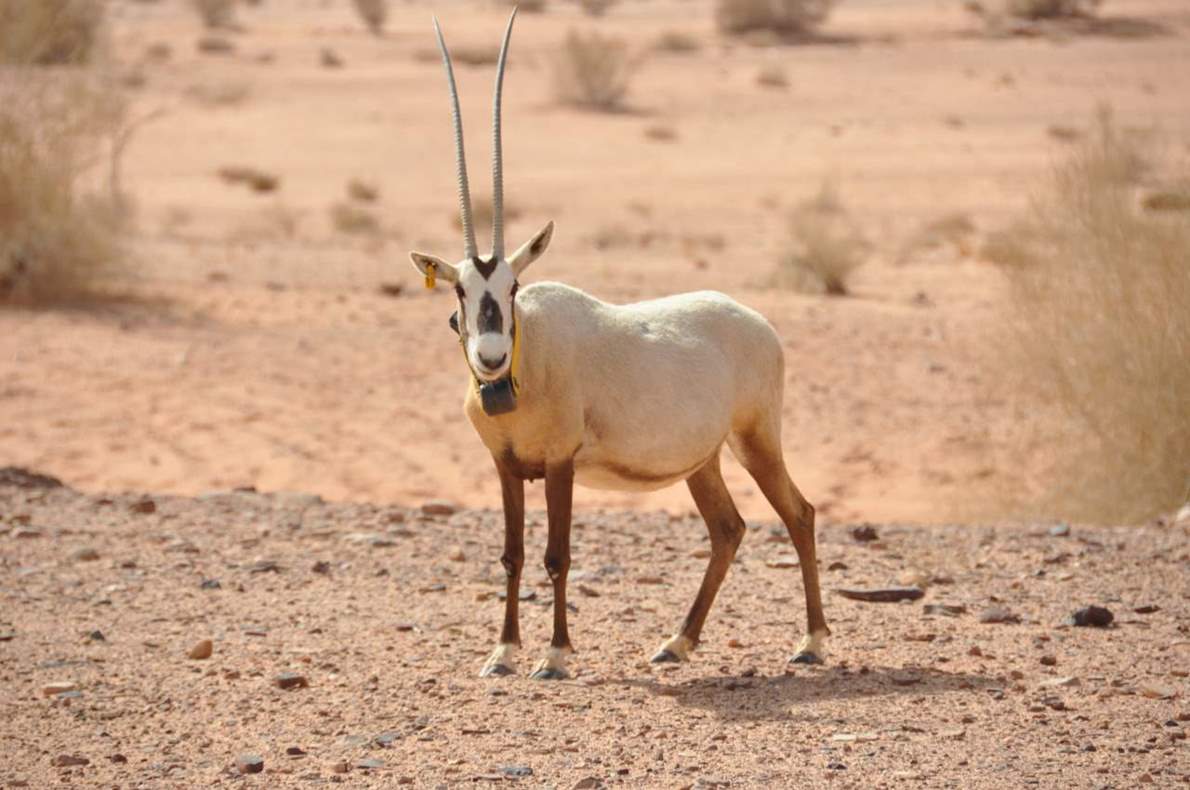 The Arabian oryx, the Kingdom’s national animal, went
extinct in the wild in Jordan in the 1920s. But a breeding population has been
established in Shaumari Wildlife reserve that distributes oryxes to other
countries hoping to replenish their populations. (Photo: RSCN)
The Arabian oryx, the Kingdom’s national animal, went
extinct in the wild in Jordan in the 1920s. But a breeding population has been
established in Shaumari Wildlife reserve that distributes oryxes to other
countries hoping to replenish their populations. (Photo: RSCN)
Striped hyena
Abed told Jordan News that the country is home
to around 16 species of carnivore that fall into 5 families. “Most of them are
threatened at the national level,” said the researcher.
Chief among these carnivores is the striped
hyena. “This species is facing huge threats from hunting,” explained Abed.
Another factor endangering the species is “habitat fragmentation”; caused by climate
change and population growth.
Yet another threat to the grey-and-black
furred predators is local mythology, which says the species is supernatural or
evil. “Some people are scared of this species. Some people kill them,” said
Abed. Additionally, some shepherds kill hyenas out of fear that the carnivores
will kill their goats. “In general, the population of this species is
declining,” said Abed.
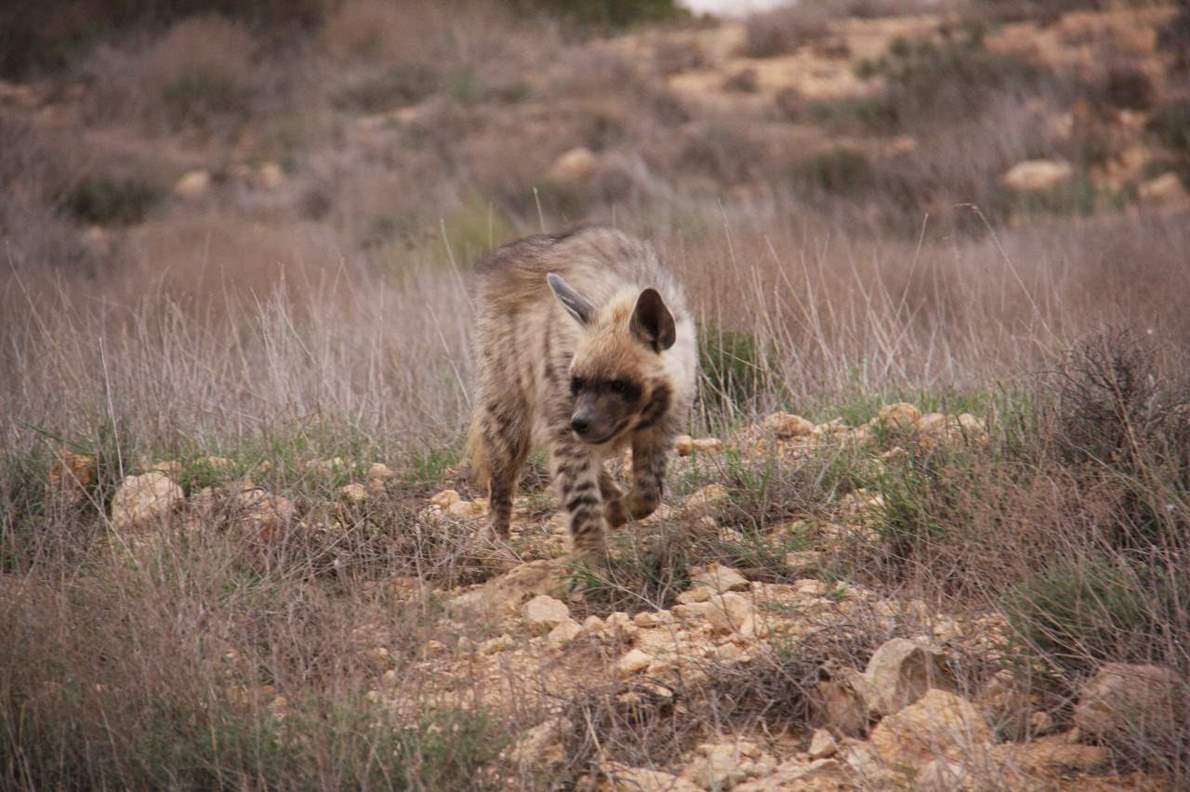 The striped hyena is one of 16 species of carnivores in Jordan. They are threatened both by hunting and by the reduction of their natural habitats. (Photo: RSCN)
Roe deer
The striped hyena is one of 16 species of carnivores in Jordan. They are threatened both by hunting and by the reduction of their natural habitats. (Photo: RSCN)
Roe deer
The roe deer, like the oryx, went extinct in
Jordan in 1909. The small deer was driven to extinction due to deforestation.
However, the Ajloun Forest Reserve launched a captive breeding program in 1998,
starting with a group of individuals from zoos. Since then, a number of the
deer have been successfully reintroduced into the wild.
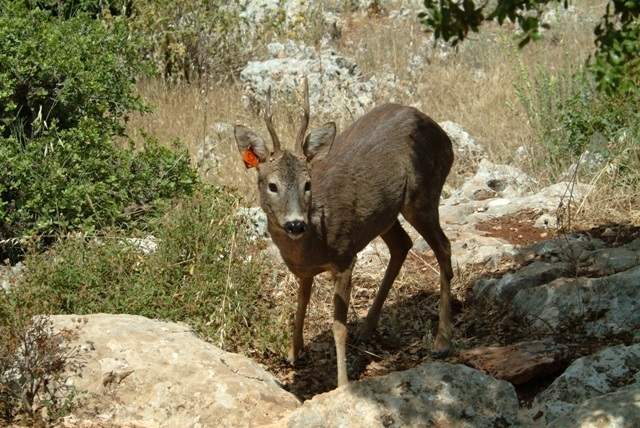 Due to deforestation, the Roe deer went extinct in Jordan in
1909. But a successful breeding program in the Ajloun Forest Reserve has led to
some of the deer being reintroduced to their natural habitats. (Photo: RSCN)
Caracal
Due to deforestation, the Roe deer went extinct in Jordan in
1909. But a successful breeding program in the Ajloun Forest Reserve has led to
some of the deer being reintroduced to their natural habitats. (Photo: RSCN)
Caracal
“The caracal is a very shy species,” said Abed.
The medium-sized wild cats are distinguished by their reddish fur and long
tufted ears. They “live in the rocky mountain areas” and “depend on the wild
resources, like mice, gerbils, (and) some kinds of birds” to eat.
Abed explained that caracals, alongside the
other wild cats that live in Jordan, are mainly endangered due to a decrease in
their natural habitats. As humans expand into areas where they live,
the natural ranges of animals like caracals decreases. “All of these species come
into conflict” with human behavior, said Abed.
Hunting caracals is forbidden in Jordan. The
animals, while more common in Africa, are rarely seen in Jordan, though they
have been documented in the Dana Biosphere Reserve.
 The caracal is a
medium-sized cat that lives in Jordan. The animal is very shy, making its
presence in the Kingdom difficult to document. (Photo: RSCN)
Jungle cat
The caracal is a
medium-sized cat that lives in Jordan. The animal is very shy, making its
presence in the Kingdom difficult to document. (Photo: RSCN)
Jungle cat
The jungle cat is another medium-sized
carnivore native to the Middle East. Abed explained that the jungle cat is one
example of a forest-inhabiting species that has been threatened by
deforestation and climate change in Jordan.
A 2003 study identified the cats in the
northwestern part of the country, mostly along the Jordan River. They prefer “thick
vegetation close to permanent water bodies”, according to the paper, led by
University of Jordan professor Mohammad Abu Baker. The study also noted that
the cats were often targeted by hunters who poisoned and attacked them in order
to defend their poultry.
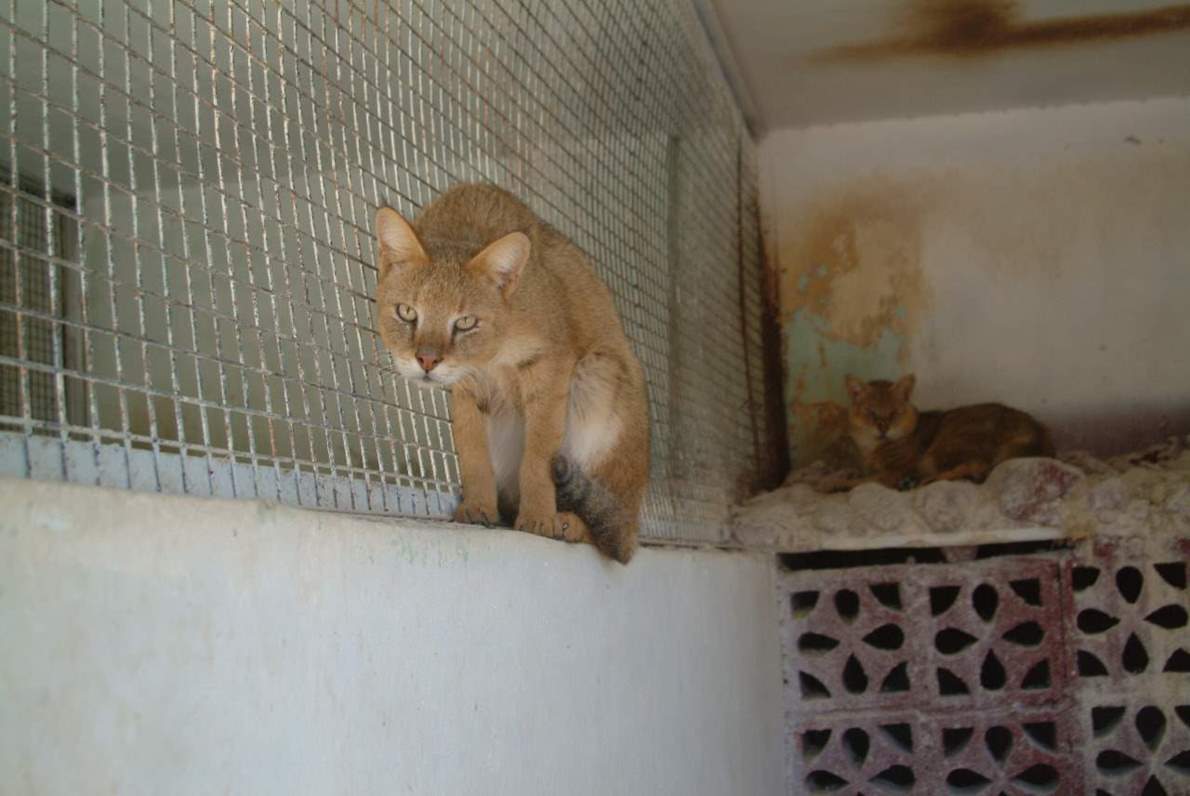 The jungle cat is
another carnivore. In Jordan, the cats are mostly found along the Jordan Valley,
but they’re threatened by habitat fragmentation and by occasionally being
poisoned or trapped by farmers protecting their flocks. (Photo: RSCN)
Nubian ibex
The jungle cat is
another carnivore. In Jordan, the cats are mostly found along the Jordan Valley,
but they’re threatened by habitat fragmentation and by occasionally being
poisoned or trapped by farmers protecting their flocks. (Photo: RSCN)
Nubian ibex
The Nubian ibex is a wild goat characterized
by long curved horns. The ibex lives in sandy mountain areas, according to
Abed, mainly in the Mujib reserve, the Dana Biosphere reserve, and Wadi Rum.
Though they were once common in Jordan and
Palestine, ibexes’ populations have reduced dramatically over the past years.
The ibexes were reintroduced into Mujib in 1989.The wild goats are “facing huge
pressure from hunters,” said Abed, a pressure that affects their population
numbers.
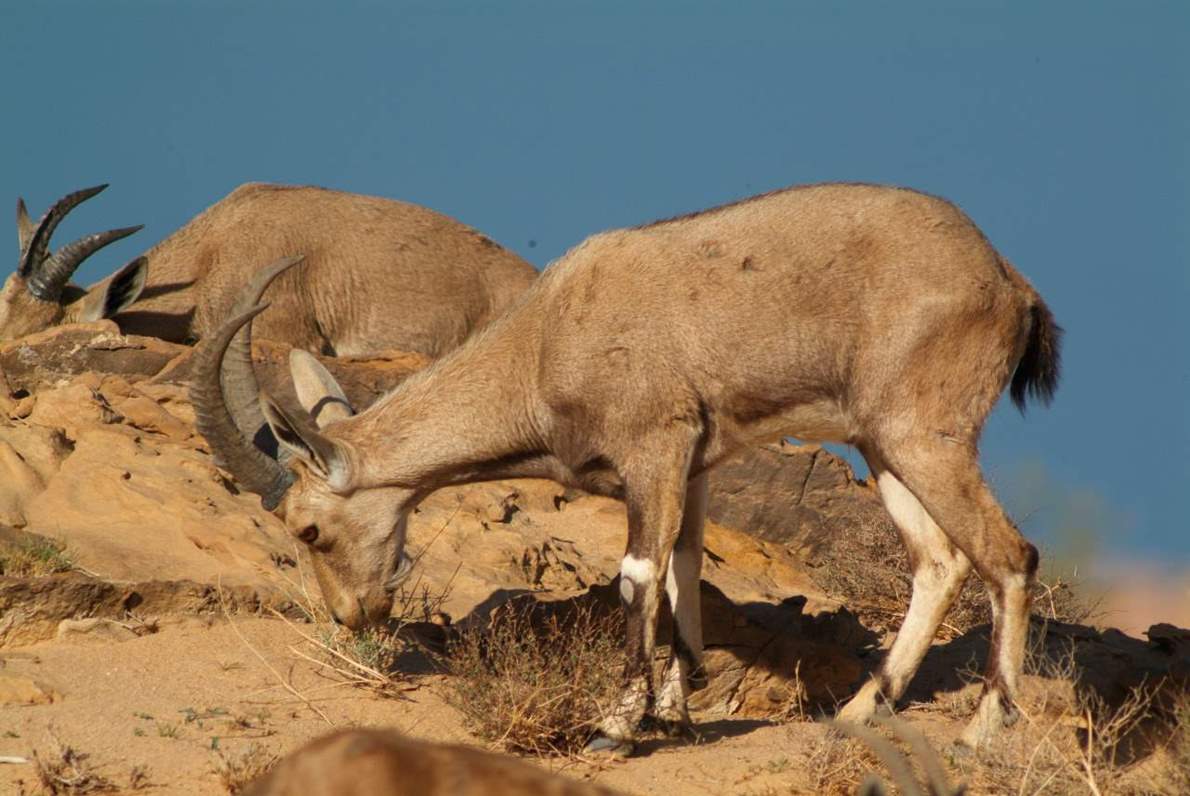 The Nubian ibex is a wild goat that lives in sandy,
mountainous areas. The ibexes face enormous pressure from hunters and their
population has greatly declined in recent years. (Photo: RSCN)
The Nubian ibex is a wild goat that lives in sandy,
mountainous areas. The ibexes face enormous pressure from hunters and their
population has greatly declined in recent years. (Photo: RSCN)
Greater horseshoe bat
Abed explained that there are 26 species of
bats in Jordan, including the greater horseshoe bat. All of these bats, as well
as bats around the world, are facing the same threat: white-nose syndrome, a
disease caused by a fungal infection that can be fatal.
But the small winged animals are also facing
other dangers, such as stigma from the coronavirus which has been speculated to
originate in bats. He added that bats are also affected by forest degradation
and the intrusion of humans onto their natural habitats.
Bats, despite the stigma from COVID-19, are a crucial part of ecosystems,
according to Abed.
 Horseshoe bats are just one of 26 species of bats that call
Jordan home. The bats have struggled to deal with both a startling disease
called white-nose syndrome and negative attention in the aftermath of the
COVID-19 pandemic. (Photo: RSCN)
Horseshoe bats are just one of 26 species of bats that call
Jordan home. The bats have struggled to deal with both a startling disease
called white-nose syndrome and negative attention in the aftermath of the
COVID-19 pandemic. (Photo: RSCN)
“We need to enhance the general opinion” about
animals in Jordan “to improve biodiversity,” said Abed.
Read more
national features



